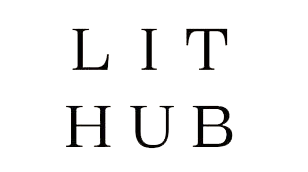If you feel like feminism is failing you, you are not alone. I sometimes have the impression that I’m as thoroughly feminist as I am thoroughly human, that feminism is as intrinsic to my constitution as my skeleton is to my body. But in my 35 years, I’ve struggled with or outright rejected feminism on several occasions: first, as an ignorant adolescent (“What do women need feminism for if we’ve already got the vote?”); then, as a sex worker who saw how regularly and even gleefully feminists stoked the public’s long-standing antipathy toward professionally sexual women; and now, again, as someone moving ever further into the far left, who cannot abide the forms of feminism that embrace and are complicit with the worst aspects of liberalism. The more I learn about the intersecting, oppressive forces that continue to shape the Western world—colonialism, patriarchy, capitalism, xenophobia, and racism—and the network of cruel social machinery to which these systems give rise—incarceration, crippling debt, disenfranchisement, deportation, and so on—the less sense it makes to use gender as the primary lens through which to regard human-engineered suffering. Feminism doesn’t feel like the sharpest weapon to wield against white supremacy or border policing, for instance, or even the best tool with which to approach basic civic concerns like vibrant schools. That’s not because those issues don’t impact women; obviously, they directly and indirectly impact many. But they don’t necessarily impact women more or in dramatically different ways than they do men. In other words, the most significant challenges those issues present aren’t tethered to one’s sex. And so prioritizing gender above other aspects of identity limits one’s realm of ethical response.
Here’s an example. American prisons often keep female prisoners shackled while they give birth. There are variations on the theme: Some women are shackled during labor, some are unshackled during but then shackled again almost immediately afterward, and almost all are shackled while heavily pregnant. There’s some variation of what shackling entails, too. It can mean being cuffed at the wrists, or at the ankles, or both—or cuffed to a hospital bed, or chained at the waist. Articulating these details makes the sadism even starker.
A class action federal lawsuit in 2017 alleged more than 40 women at the Milwaukee County Jail suffered this horror. It was preceded by lawsuits in 2014 and 2016 against the same jail for similar practices. But the appalling practice is hardly confined to one city or even one state. In 2015, New York prisons were found to be shackling prisoners in labor in spite of a state law that made it illegal to do so. And according to a 2016 report by the Prison Birth Project and Prisoners’ Legal Services of Massachusetts, jails and prisons in Massachusetts were guilty of similar violations.
Most feminists probably agree that this is a feminist issue; the topic accordingly receives coverage on feminist websites and sometimes in women’s magazines. But does a feminist obligation to attend to the rights of the imprisoned extend only as far as pregnancy and labor? Is it a feminist issue when a nonpregnant woman is shackled? Or when she is caged for years and exploited for her labor, denied face-to-face visits from loved ones, held captive in a compound in the name of “ justice”? If the answer to these questions is yes, then is it also a feminist issue when men are shackled during various health emergencies—seizures, say? (In 2014, a male inmate in Colorado died after undergoing several seizures while in restraints and receiving no medical treatment.) Is it a feminist issue when incarcerated men are denied the right to visit with family, or exploited for their labor? Is it a feminist issue that so many men are raped while in prison? Or does feminism’s responsibility begin and end with gender-based mistreatment?
“The more I learn about the intersecting, oppressive forces that continue to shape the Western world—colonialism, patriarchy, capitalism, xenophobia, and racism—and the network of cruel social machinery to which these systems give rise—incarceration, crippling debt, disenfranchisement, deportation, and so on—the less sense it makes to use gender as the primary lens through which to regard human-engineered suffering.”The feminists hired by prominent media outlets often advocate for measures that would result in higher levels of incarceration. They write op-eds in favor of further criminalization around sex work, and call for longer prison sentences for men convicted of assault—which we’ve known for decades is not necessarily synonymous with “men who’ve committed the crime.” They also, disturbingly, relish the theater of sentencing like that enacted by Judge Rosemarie Aquilina, who told serial sexual abuser Larry Nassar that if she could, she would “allow some or many people to do to him what he did to others.” (So, sexual violation is an atrocity . . . unless it happens to the right person?) They capitalize on women’s justified fear and anger around mistreatment by men to shore up the status quo, to suggest that our current problems are not the result of fundamentally unjust institutions, but rather institutions that are only incidentally sexist. That means those same institutions could become less so with the right adjustments, like more draconian sentencing for crimes against women, or more female judges.
But the prison system is racist and brutal by design, not by accident or mismanagement, just as the court system regularly fails the most vulnerable because it was built to protect the powerful. “The challenge of the 21st century is not to demand equal opportunity to participate in the machinery of oppression,” revolutionary thinker Angela Davis has written. “Rather, it is to identify and dismantle those structures.” Yet leveraging our existing legal system for criminalization remains the go-to strategy for most feminists when it comes to dealing with objectionable behavior. Criminalization entails fines and incarceration; it does not meaningfully concern itself with rehabilitation, education, victim care, or prevention. Its ability to deter other potential offenders is unproven—or, arguably, proven to be nonexistent, as is especially demonstrable with laws against drug use and possession—and the recidivism rate is astronomical. Moreover, the legal system is not accessible to everyone. Undocumented people cannot use it. People leading already criminalized lives, like sex workers, often cannot use it, and marginalized people are also discouraged from or outright prevented from using it by a slew of means. (The most obvious of which is usually time and money.)
This instinct to turn to the state is not unfamiliar to me. I, too, learned from a young age that laws and courts and police are the way to deal with almost everything: You notice something is wrong, you get a law passed or use an existing law to stop it, and the problem is solved. This is not how our current laws work in practice, and it is incumbent upon us to face that fact with honesty and creativity. When activists speak out against police and prisons, people immediately demand that they offer a replacement apparatus, but it is an impossible demand. The transformation needs to be more profound than a simple swap. Prison abolitionist Mariame Kaba speaks on this point with great eloquence: “We have to transform the relationships we have with each other so we can really create new forms of safety and justice in our communities. [The work of abolition] insists that it is necessary that you change everything.” [emphasis added.]
Many feminists, though, have lost their foremother’s radical vision of changing everything. Instead, they are ready to work within the tight confines of an ineffective system, and they endorse and invest in a de facto police state. The “feminist” modifier itself is useless for indicating a stance on this issue, as it is for many others: protecting the rights of trans women, for instance, or even the legality of abortion.
This tension is long-standing and perhaps inevitable given that feminism is assumed to galvanize people under a banner of gender rather than shared ideological and moral commitments, as a formal organization, like a political party or a local activist group, would. There’s no explicit platform for feminism because it’s an idea, ownerless and atomized, based on the observation of one specific, persistent source of imbalance in a stunningly unfair world. It can be invoked (cynically or sincerely) by anyone, which is part of why it’s been so easily co-opted by corporations who use superficial gestures of pro-women sentiment for brand management, and by a mainstream media that anoints clueless celebrities like Lena Dunham, Taylor Swift, and Amy Schumer as the vanguard of righteous, pro-lady politics.
Aside from for-profit institutions muddying the waters, there’s also the matter of individual dissent. Even groups with clear and detailed mission statements run into internal disagreement. That’s healthy and good. But today’s concept of feminism provides such a wide net that some women (and men) assume gender alone makes one eligible for membership, regardless of actual convictions. “Feminist” has become synonymous with hollow phrases like “female empowerment” and “strong women” and “girl power.” If a woman’s ambition were automatically feminist by virtue of her gender alone, that would hold true whether she’s directing her energies into exploiting workers in other countries, trying to overturn affirmative action, or working to keep her neighborhood free from immigrants.
Sheryl Sandberg’s Lean In campaign notoriously exemplifies this sort of self-serving attitude. In her 2010 TED Talk and 2013 book by the same name, Sandberg exhorted working women to throw themselves into the corporate world, implying that women’s general lack of representation in the boardroom was a function of their own timidity and emotionality rather than workplace discrimination or intractable secondary obstacles (like being unable to afford childcare, or simply not wanting to sacrifice quality of life for a title). Why is it important that women assume more prominent roles in corporations? Because their absence indicates sexism, and sexism is bad. Or because they’d bring “diversity,” and diversity makes a company stronger. A number of similar platitudes could be offered in response to this question, but none would be sufficient. By assuming that having more women is better, period, we relinquish the opportunity to question what it is the corporation does (read: who it harms and how it harms them), what’s inherently good about climbing to the top of any hierarchy, or how it socially benefits all women for one particular woman to earn an obscene amount of money.
The feminism espoused by Sandberg goes by many names—neoliberal feminism, white feminism, corporate feminism—but whatever it’s called, its priority is to help a small number of people further consolidate power and money without rocking the proverbial boat. Few systems are threatened by slotting women into roles traditionally held by men, because absolute wealth and absolute power tend to corrupt absolutely. Few want to dismantle the means by which they achieve tremendous success; rather, they want to further consolidate that success in all its forms: influence, wealth, and so on. If patriarchy’s worst offense were keeping women out of the workplace, then sure, women like Sheryl Sandberg would be triumphs of the cause. But the notion that women shouldn’t work outside the home was always unique to the white upper and middle classes. Poorer women never had the option to stay at home, and Black women in the United States have virtually always been expected to work, if not in the fields then in white homes as “domestic” servants. The far more noxious effects of patriarchy, like rendering women incapable of exercising autonomy over their reproduction or paying them lower wages for their work, can and do endure even with more women “on top.” You never have to look very far to find female politicians voting to make abortion less accessible, or female activists trying to take down Planned Parenthood, just as you don’t have to search very hard to find powerful women who explicitly blame other women for their own sexual assault or who, à la Ann Coulter, go so far as to suggest women shouldn’t have the right to vote.
So not only is Lean In feminism useless for achieving a truly pro-women future wherein all women see their lives improved, but it actively undermines that vision. It’s a feminism that purports to push for progress while wedding itself to the perpetuation and justification of patriarchy’s equally insidious attendants: capitalism, imperialism, racism, ableism, and so on. Every other hierarchy may remain intact as long as (some) women are allowed a shot at approaching the top. By participating in unjust power structures, and giving those same structures a fresh patina of legitimacy, this feminism places a radically reimagined future further out of reach for the people—women and men alike—who so desperately need it.
“There’s no explicit platform for feminism because it’s an idea, ownerless and atomized, based on the observation of one specific, persistent source of imbalance in a stunningly unfair world. It can be invoked (cynically or sincerely) by anyone, which is part of why it’s been so easily co-opted by corporations who use superficial gestures of pro-women sentiment for brand management”Ignoring the problems of less advantaged women to secure the rights, and later, the high-profile achievement, of the privileged has been part of feminism’s legacy since the beginning. Suffragettes (who were primarily white and middle or upper class) were often outspoken racists who fomented anti-Black sentiment, participating in segregation and endorsing colonialism. Various white figureheads of feminism in the 1960s and 1970s were willfully ignorant about and explicitly unconcerned by the social concerns shared by women of color; they also disavowed lesbians and tried to keep them apart from the larger movement. Today, many prominent British feminists stoke anti-trans fears among their followers and rally for further criminalization and stigmatization of sex work—in spite of the fact that doing so demonstrably keeps female (and male, and non-gender-conforming) sex workers extraordinarily vulnerable. American feminists are quieter on these issues, but then, they’re quiet on a lot of issues—namely, almost anything that doesn’t revolve around (white, cis) women’s reproductive options and (white, cis) women’s experience of sexual assault or harassment, or cultural representation as measured by women directing big-budget films and winning awards.
Mainstream feminism fails us because, by definition, it adheres to the status quo and nudges it only slightly to the left, if at all. It wouldn’t be mainstream if it didn’t play by these rules. But the status quo is actively harmful to almost everyone, regardless of gender. It concentrates wealth in the hands of the .01 percent (US’ 3 RICHEST MEN HAVE MORE WEALTH THAN HALF OF THE POPULATION was a repeated headline in late 2017 following the release of a report by the Institute for Policy Studies in Washington, D.C.) It keeps many of us underemployed and terrified of getting sick, lest we need medical care that far outstrips our resources. It allows police officers to murder with impunity. It renders voting inaccessible to huge swaths of the adult population. It ravages communities with gun violence. It breaks our hearts, and it makes it harder to start every day with enough hope to work for something better.
Perhaps the most apt name for this kind of feminism, then, is sabotage feminism. It exists to stymie the efforts of the most radical feminist values—those that put the most disadvantaged among us first, not last—by turning the very idea of feminism on itself, by feeding feminism its own tail. Second-wave feminists—those active in the late 1960s through the ’80s—envisioned a profound remaking of society on sexual, familial, and economic levels. These years birthed the dreams of wages for housework, the Equal Rights Amendment, and unapologetic abortion on demand, and it offered women a fantasy of solidarity as they rallied behind those efforts. But whatever wave of feminism we’re experiencing now might be best described as no wave, for it leaves us bereft of unity, momentum, and power as we compete against each other to sit with men on the boards of companies with track records of unremitting mendacity.
I know a lot of feminists are more progressive and intelligent than what the largest news outlets suggest. When I use “us” and “we,” it’s with this reality in mind; it is an attempt to encompass people of any gender who desire less suffering for all, and who believe their own freedom, comfort, and pleasure should not come at the expense of someone else’s. But because Lean In feminism—the feminism that says any conventionally successful woman is likely to be an example of feminist success—still has a near-monopoly when it comes to the dominant public discourse, excoriating and disavowing it is an important step in pushing against the ways it’s leveraged to silence more substantive concerns.


